There’s only one situation where you don’t mind your alarm going off while it’s still dark outside – and that’s when you’ve got the promise of a day on Kapiti Island ahead of you!
Pulling up at Paraparaumu boat ramp, we were met by the owner of Kapiti Island Nature Tours, John Barrett, and his niece Minnie. There had been a slight change of plan and we were heading over to the island on Ngāti Toa’s boat, rather than their own boat. It was really nice to see two businesses working alongside each other to make sure that their clients had the best experience.
Our bags were thoroughly checked, as Kapiti Island is a designated wildlife sanctuary, being pest and predator free, as well as our shoes being disinfected before we boarded the boat.
Simon & I were the last ones to board, which meant we had the best view out the back of the boat as we sped away from Paraparaumu towards the island. There were a mix of ages and nationalities on the boat – New Zealand, Australian, Dutch and German.
After the 20 minute journey across the 5km channel, we arrived at Rangatira Flat on Kapiti Island. We filed along the beach to the hut where we’d receive our briefing from our guide for the day, Andy. Arriving on the beach it was obvious from the cacophony coming from the surrounding trees that birds were going to be the main feature of our time here. I was starting to wonder how I was going to be able to see them and recognise them, when thankfully my fears were allayed by Andy, who gave us an informative talk on what we could expect from our time on the island.
After a brief history of the island (more on that later), Andy outlined the rules of the island, the most important one of which was to not feed the birds (and once we saw the pukus on the kereru, we understood why!). This rule was all well and good from the human viewpoint, but the birds had a different idea, especially the weka and kaka.
Andy informed us that the kaka have learnt that the backpacks of visitors to the island normally contain food, so they are cheeky enough to fly onto the backpacks to get at a potential food source. In fact, they’ve even gone so far as to learn how to undo zips!
Simon & I joined two others for a guided tour from Andy – highly recommended if like us, you’re an amateur bird-watcher and struggle to tell your Stitchbird from your Saddleback.
The different calls of the birdlife were easily identified by Andy, and we soon learnt how to spot them and learnt what the different calls meant, and the behaviour of the birds. For example, Korimako (Bellbird) are always found in pairs – if you see one, the other will be nearby. The Toutouwai (New Zealand Robin) will follow you along the trail, and if you scuff the dirt and then step back a bit, they’ll soon come to explore what bugs you may have dug up for them.
We were soon identifying birds on our own (which shows how good a teacher Andy was!), and learning to look up rather than down at our feet, which so many of us do when walking through the bush.
At a crossway, Andy left us to explore the island on our own for the next few hours until we all had to meet back at the boat at 2.30 to continue our journey up to the North End of the island. I convinced Simon (he may have a different recollection) that we had to head up to the summit, so that we did.
On the way there, we stopped several times as we heard or spotted birds to admire them in their natural habitat. With no predators on the island, the birds are free to roam and are quite used to humans, so don’t shy away from them. This allows visitors to get close to the birds (although there were times where I was envious of the couple that thought to bring binoculars).
We passed a DOC ranger coming down the hill, who told us that there were many Weka and Kaka at the feeding station a little bit further on. With this knowledge buoying us forward, we almost missed the kaka that was sitting in the tree, an arm’s length away from us. Thankfully, Simon has much better eyesight than me, and called me back to see. The kaka was almost as interested in us as we were in it! It made its way down the tree, cocking its head towards Simon as if to greet him.
We were so enamoured with the kaka that it gave us a bit of a shock when he suddenly took flight to land right on Simon’s backpack and got to work on trying to undo the zips – exactly what Andy told us they like to do! Heeding her advice of not feeding the birds, Simon gently shook the cheeky kaka off and it flew away, to wait until another unsuspecting visitor crossed its path.
We kept on walking up towards the summit – thankful that the tree cover kept the sun from our skin (that didn’t mean we weren’t sweating up a storm, we were!) and taking in the changes in the bush and the birdlife, the higher up the island we went.
And finally – we rounded a corner and there we were, at the highest point on the island, or Tuteremoana Trig. After the obligatory photos were taken (were you even there if there isn’t a selfie to prove it?), we settled down to lunch with a view. The weka were eagerly eyeing up our backpacks and were loitering around the picnic tables, but everyone was very aware of what Andy had said in her earlier briefing.
We had been warned that we had to leave the summit by 1pm at the latest to make sure we were back in time for the boat to the Northern End of the island, so we headed off – it took us much less time than it had coming up! The Kereru were particularly keen to make themselves known, the unmistakable humph-humph sound of their flying alerting us to their presence.
Arriving back, we relaxed at the tables outside the hut, talking with some of the other visitors on the island. We met Corrie and Peter, who were on their third day on the island and had ticked off every bird there was to see on the island, so they were very happy! They were staying at the lodge where we’d be that evening, and eagerly told us of the culinary delights that awaited us.
We couldn’t resist dipping our toes in the ocean, and figured we deserved it after climbing 520m to the summit. The water was refreshing, and with Simon skipping stones and the beach deserted apart from us, it truly was a wonderful place to be (especially when we thought of our workmates, at their desks while we were out enjoying the sun!)
Everyone gathered back at the beach as the boat sailed into view to take us on to our next destination. At the Northern End, Manaaki, Amo and Andy were there to greet us as we got off the boat, along with Corrie and Peter. It was an awesome feeling, standing on the shore, waving goodbye to a boat full of people, and knowing that we had this whole island to ourselves for the evening.
Manaaki Barrett is John’s son, and Amo is his sister. Amo has lived on the island for years – it’s her home. She has a place back on the mainland but very rarely goes there, and I can see why when you have everything you need right here.
Walking the 400 metres up to the lodge, Manaaki gave us his whanau’s history of being on the island which has been in their family for more than 140 years. The government acquired Kapiti Island in 1897 to conserve the flora and fauna, but due to having continually lived on the island, they were allowed to stay on the 13 hectares around Waiorua Bay at the northern end of the island, where the lodge is today.
Arriving at the lodge, the song of the birds in the surrounding trees was overwhelming. Manaaki and Andy warned us to never walk outside with food, or you’d find it didn’t quite make it to your mouth, but instead to that of the kakas and weka that were wandering around outside.
Being taken out to our accommodation for the night, the heat of the day quickly ensured that we both opted for the tent accommodation for the evening (and thankfully they had two available, so that worked well!) The tents were absolutely gorgeous, and quickly erased memories of trying to put up a four person tent (which actually only fit two comfortably) in the wind on numerous camping holidays in my childhood. These tents were fit were royalty. They are permanent structures, strong, airy, and comfortable with a real bed and floor inside!
Harvey (one of the chefs at the lodge), and Manaaki invited Simon out to collect paua for dinner. They jumped on the quad-bike to head to the Northern tip, and Manaaki’s secret spot to find kaimoana. Tangaroa must have been plentiful, as they were back with their quota within half an hour. The water was warm and clear with paua everywhere – they hardly had to get wet. Chef Harvey completed the exercise by serving up beautiful tender crumbed paua, which even Peter and Corrie were tempted by.
The hot tub had been turned on for us (just what our tired leg muscles were screaming out for), so the togs were on and into the tub we went. It was blissful, until the occasion was made even better, if that’s possible, when Manaaki bought out a couple of beers for us both. Superb!
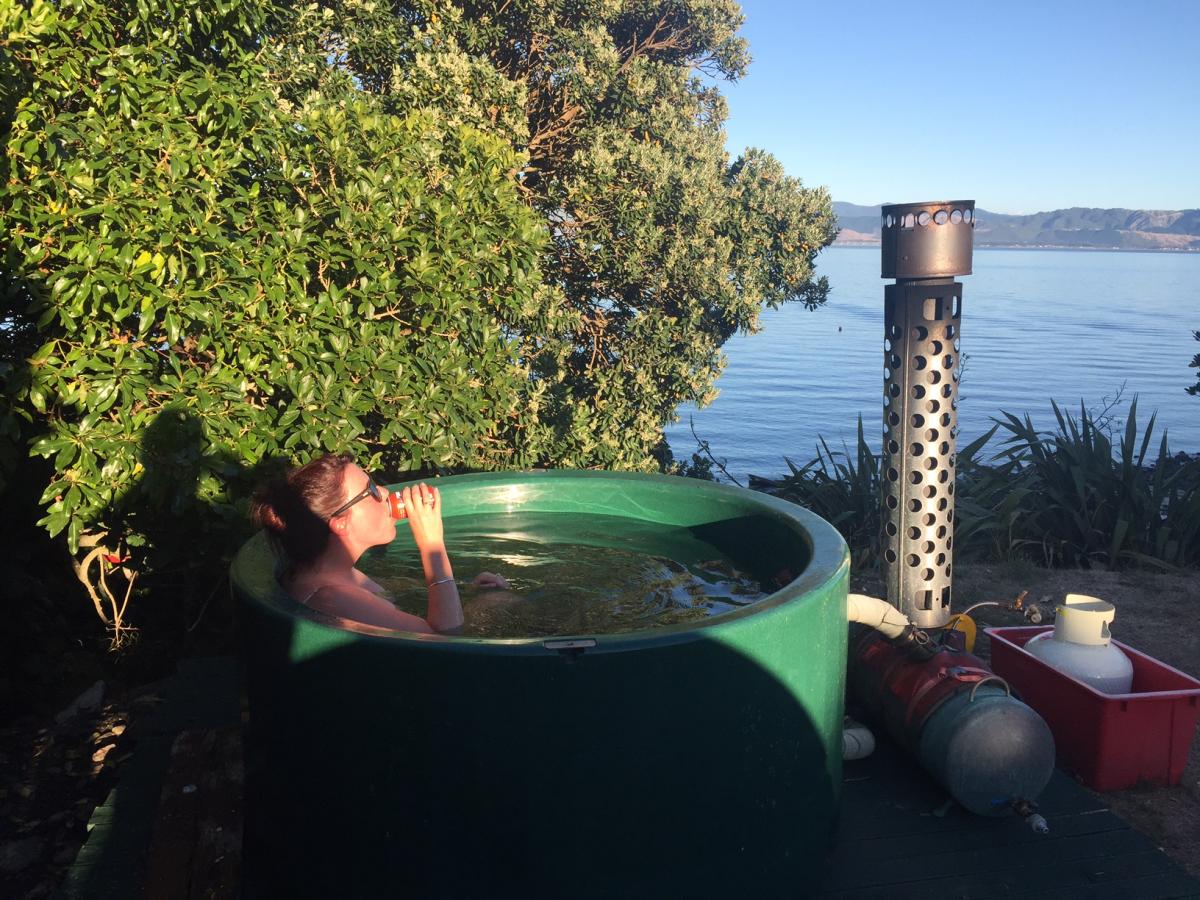
Dinner was inside, and we helped ourselves to venison steaks, freshly caught fish, paua, vegetables and salads. You will definitely not go hungry on Kapiti Island with the Barrett’s looking after you! The wine and conversation flowed as Peter and Corrie told us more about the Netherlands, and Amo and Manaaki told us about their family history on the island. I won’t give it all away here, but suffice to say that this is a family that has Kapiti Island in its blood – their kaitiakitanga of the island is obvious to all.
They told us about a recent rough time in the island’s history, where three stoats were found on the previously predator free island. A guide was on the path, when a stoat literally ran across in front of her. Action was swift and immediate, with DOC, rat-dogs and volunteers employed to traverse every section of the island. In the end, three stoats were found, a female, her son and daughter.
It’s though that they arrived on the island via a log that had drifted down from the Waikanae River, and across the 5km channel to the island. Stoats can swim up to 2km, so they only had to make it half way across on the log before they could potentially swim to the island. This theory was given further weight when sailors filmed a possum on a log in the ocean near the island (thankfully, the current was taking it the other way).
As the sun set, Andy left us to scope out around the cabins, where kiwi could generally be found rustling around most evenings. The rest of us waited inside for a text from her to say come quickly, but quietly. A beep from Manaaki’s phone and we were off, with him guiding the way with a red-lit torch, not that we required it as the full moon provided light.
Andy beckoned us closer, and as we crouched down to ground level, we found ourselves face to face with a Little Spotted Kiwi. He was oblivious to us; he was more concerned with finding himself a snack. We all gazed in awe, as it was the closest that any of us had come to a kiwi in the wild before. Manaaki had previously informed us that even though there were more than 1200 kiwi living on the island, they all had a territory of approximately 2 hectares each. Kiwi are very territorial, and it’s rare to find other kiwi on another’s patch.
We set off to the North of the island, walking quietly so we didn’t disturb any other kiwi we may be lucky to spot. Up ahead, Manaaki stopped us as he held out his hand with a gecko, which are prevalent on this part of the island. Putting the gecko on my hand, the feeling was reminiscent of those sticky hands that kids used to play with in the nineties. Not an unpleasant feeling, but the gecko soon got over it, and jumped off me to continue on with his evening.
Unfortunately, no more kiwis made themselves known to us, but we felt incredibly privileged to have seen one so close, and so early on in the evening. They are truly interesting creatures, and to see them in their natural habitat was nothing short of amazing.
The sounds of the Ruru (Morepork) accompanied us back to the lodge, and snuggling into my comfortable bed that night, with the sounds of birds outside, it was one of the best sleeps I’ve ever had.
Waking up the next morning, on my way to the lodge for breakfast I came across one half of the resident takahē pair who hang out around the lodge. There are only 250 of these birds left in the world, so to come across one so casually was quite emotional.
A cooked breakfast, and then everyone pitched in to get everything ready for the boat trip back to the mainland. The weather was due to pack in, so only Amo and Manaaki were staying on the island, everyone else was heading back. The boat pulled up, and as we all pulled away we waved back towards Manaaki and Amo, secretly wishing that we were as privileged as them, to call this beautiful island home.
A huge thank you to John and everyone from Kapiti Island Nature Tours involved in our visit.
Director of Regions, Simon Phillips, and Communications Manager Amy Hodgkinson spent a day and night on Kapiti Island with Kapiti Island Nature Tours. New Zealand Māori Tourism pays for all our accommodation and experiences.
To contact the people/businesses mentioned above:
Kapiti Island Nature Tours
Tours, Accommodation, Transport, Guided walks
Kapiti Island Nature Tours & Kapiti Nature Lodge, http://www.kapitiislandnaturetours.co.nz or Phone 0800 547 5263 or bookings@kapitiislandnaturetours.co.nz
GEOGRAPHICAL PROFILE
Closest Passenger Airport: Paraparaumu Airport, 10 minutes/5km or Wellington Airport 1 hour/60km
Driving distance from Napier: 3.2 hours/268km
Driving distance from Palmerston North: 1.2 hours/95 km
Driving distance from Wellington: 1 hours/60km
Driving distance from New Plymouth: 4 hours/300km
Closest town: Paraparaumu (5 minutes/1km)


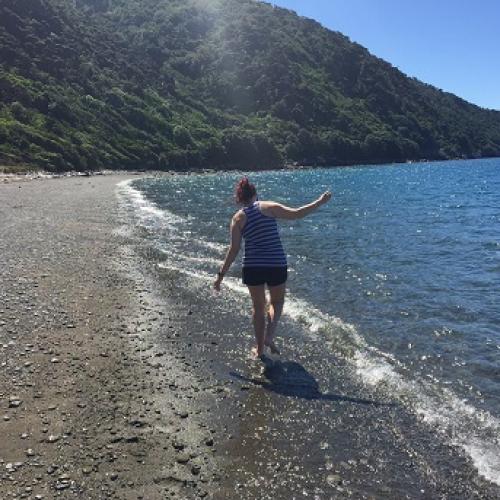
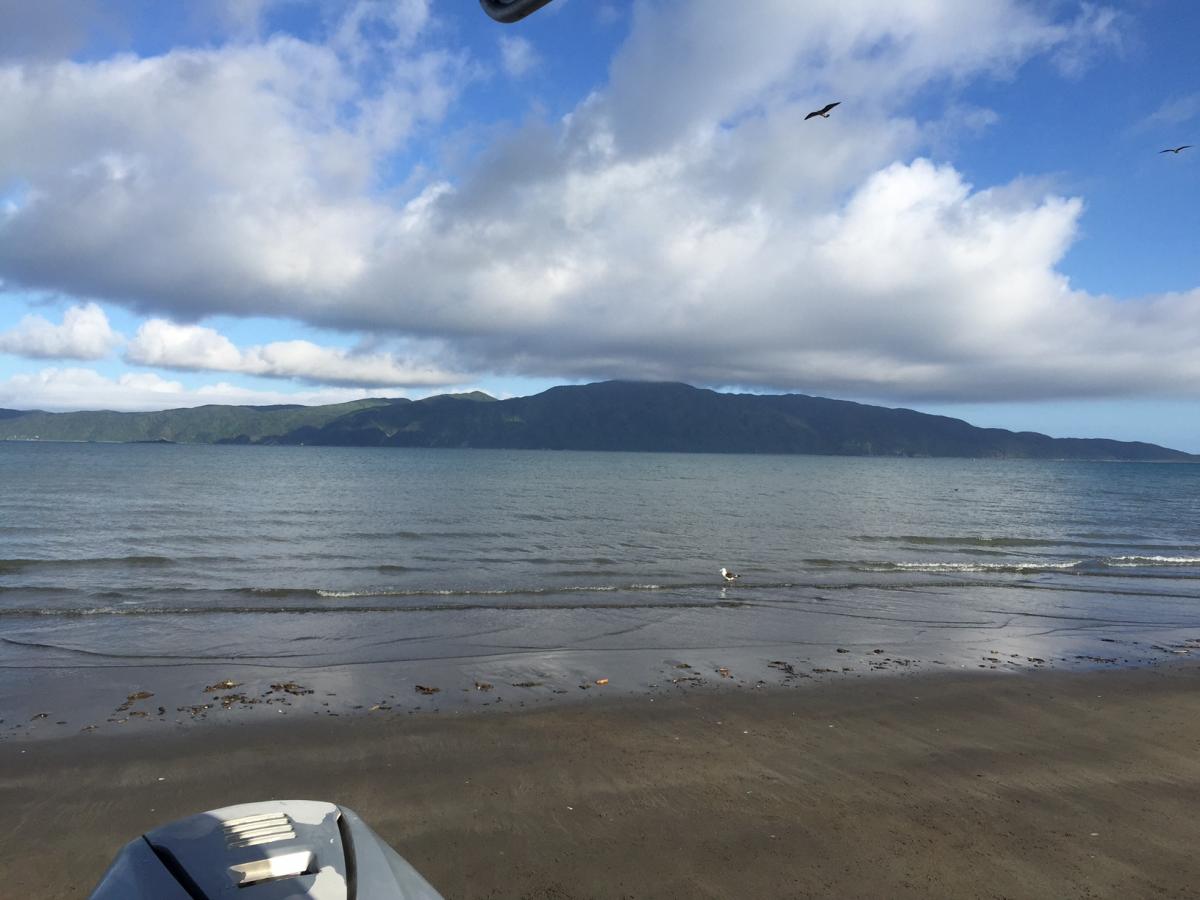

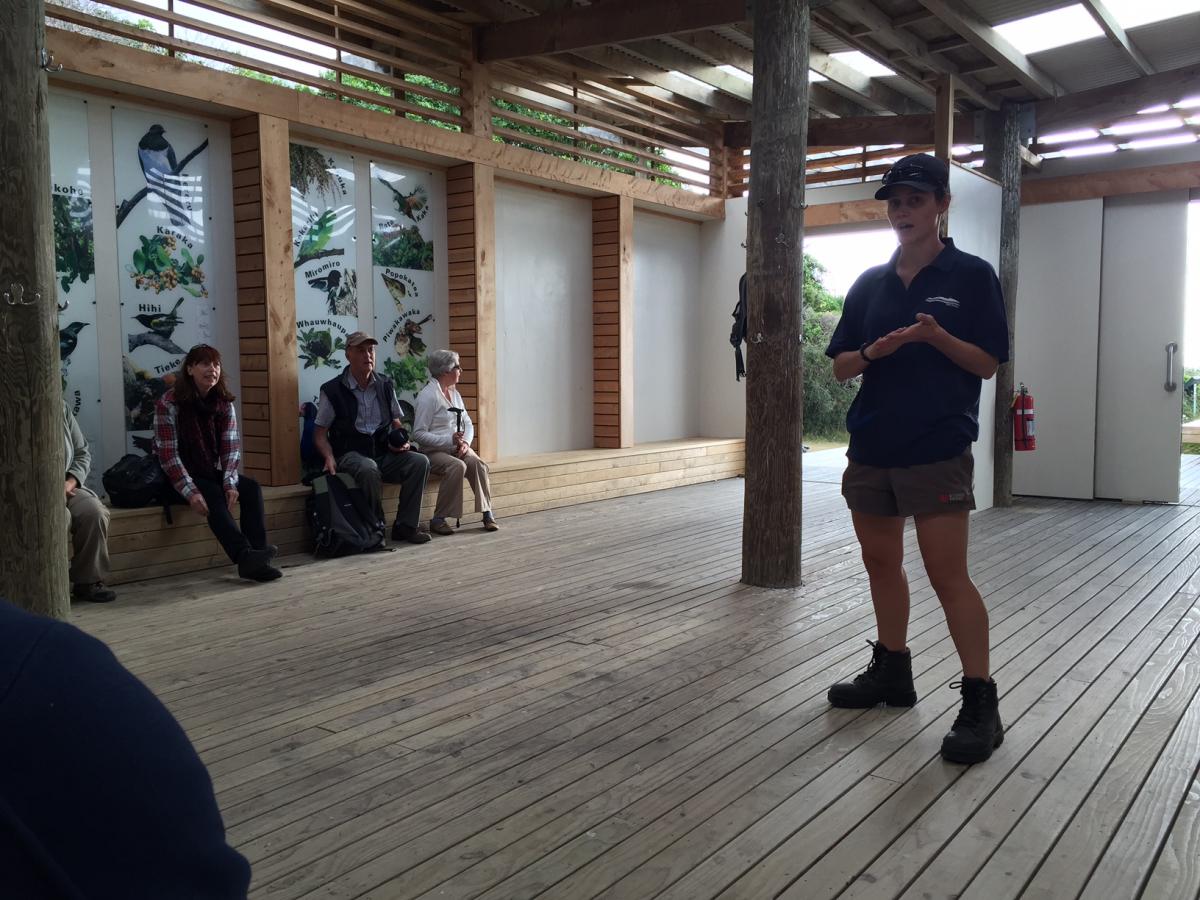
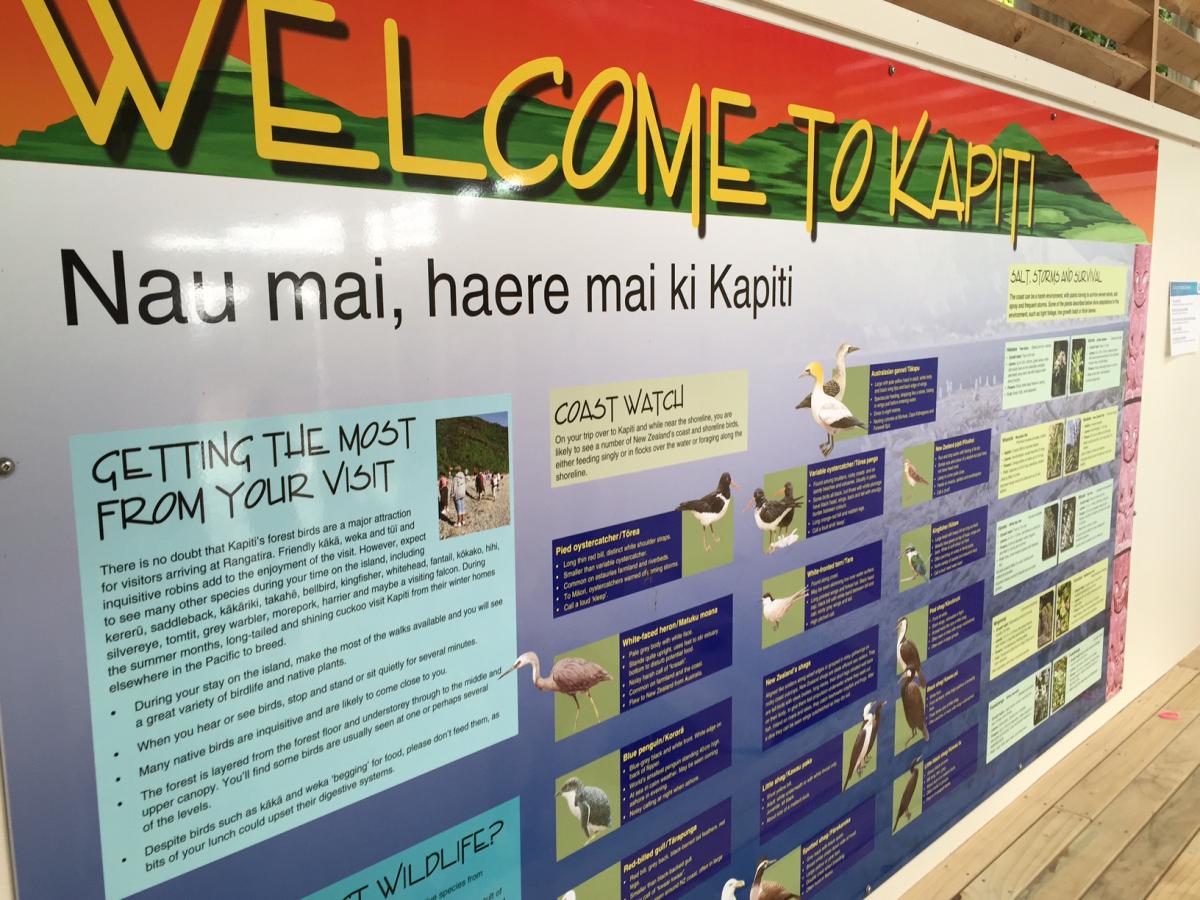
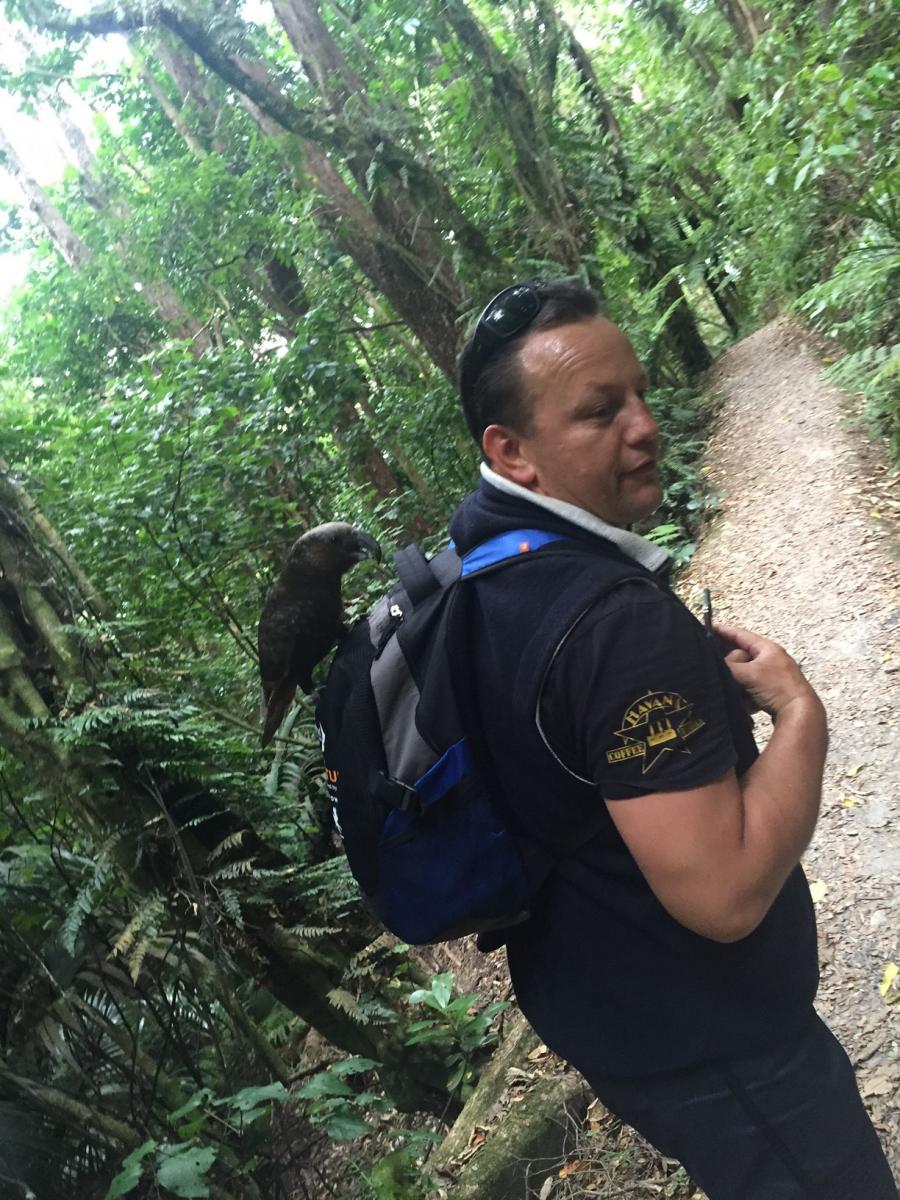
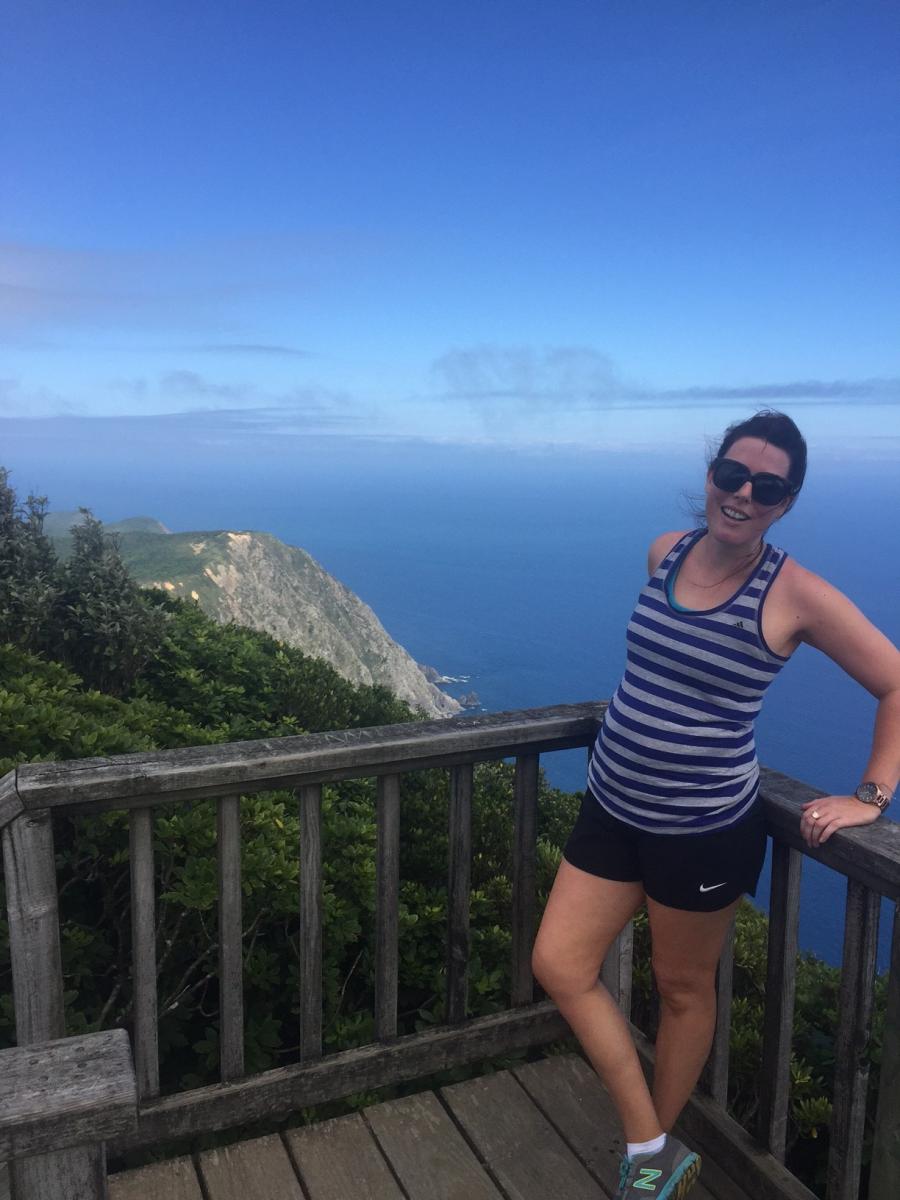
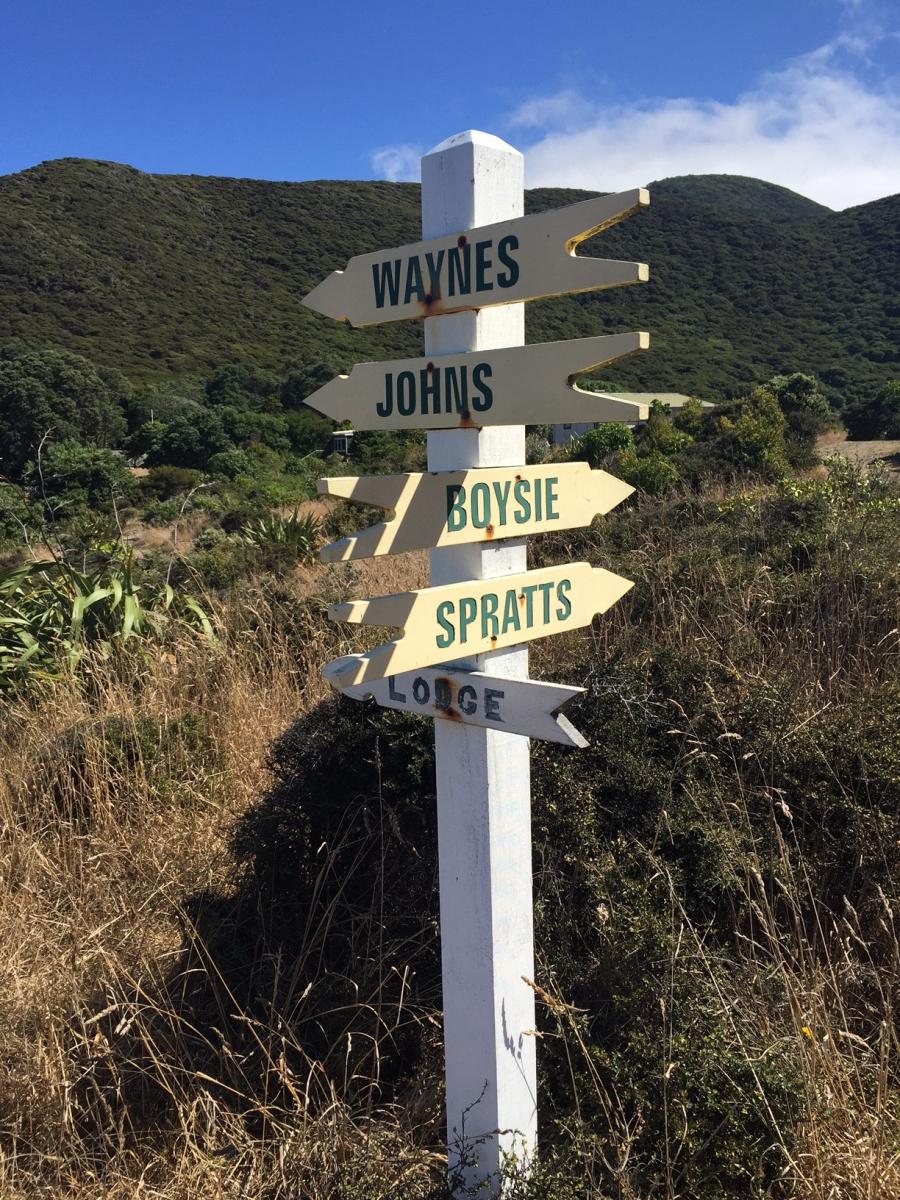
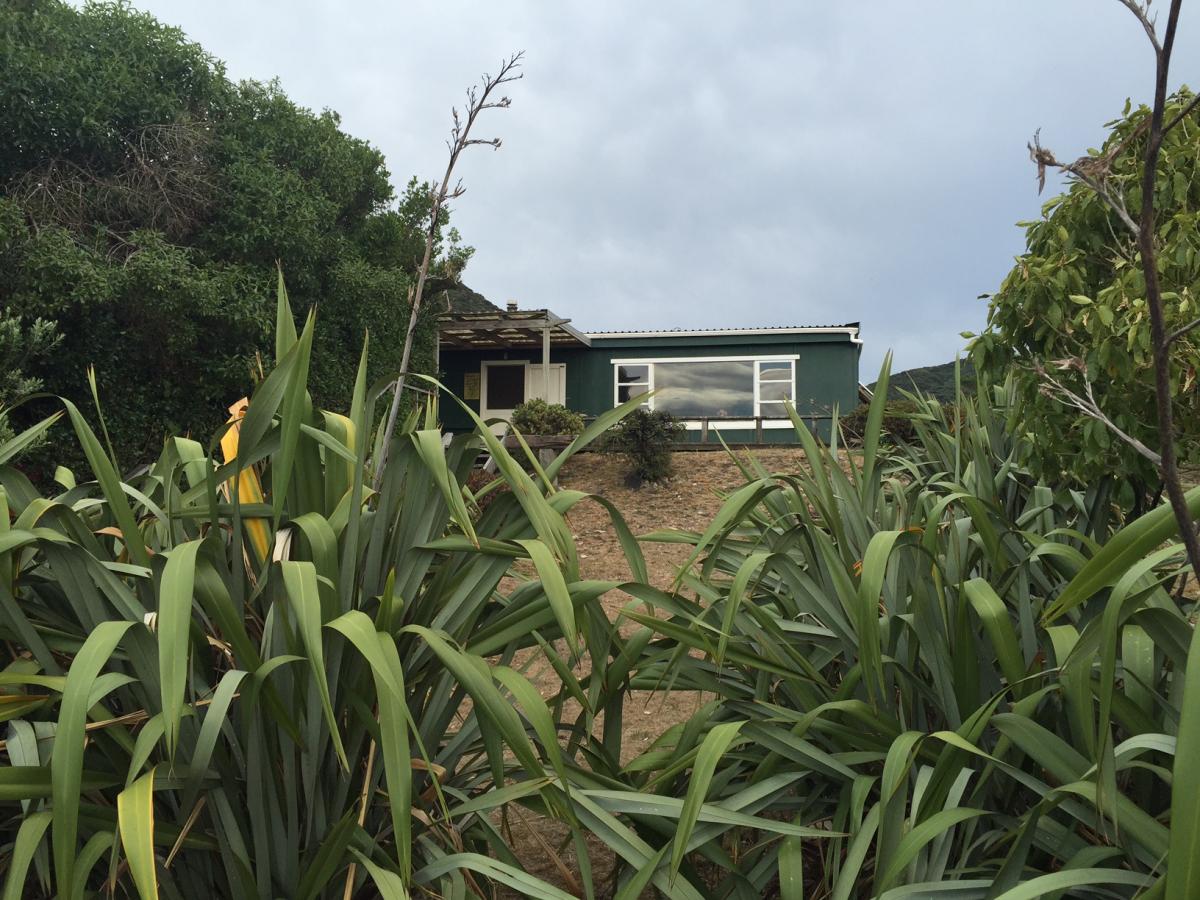
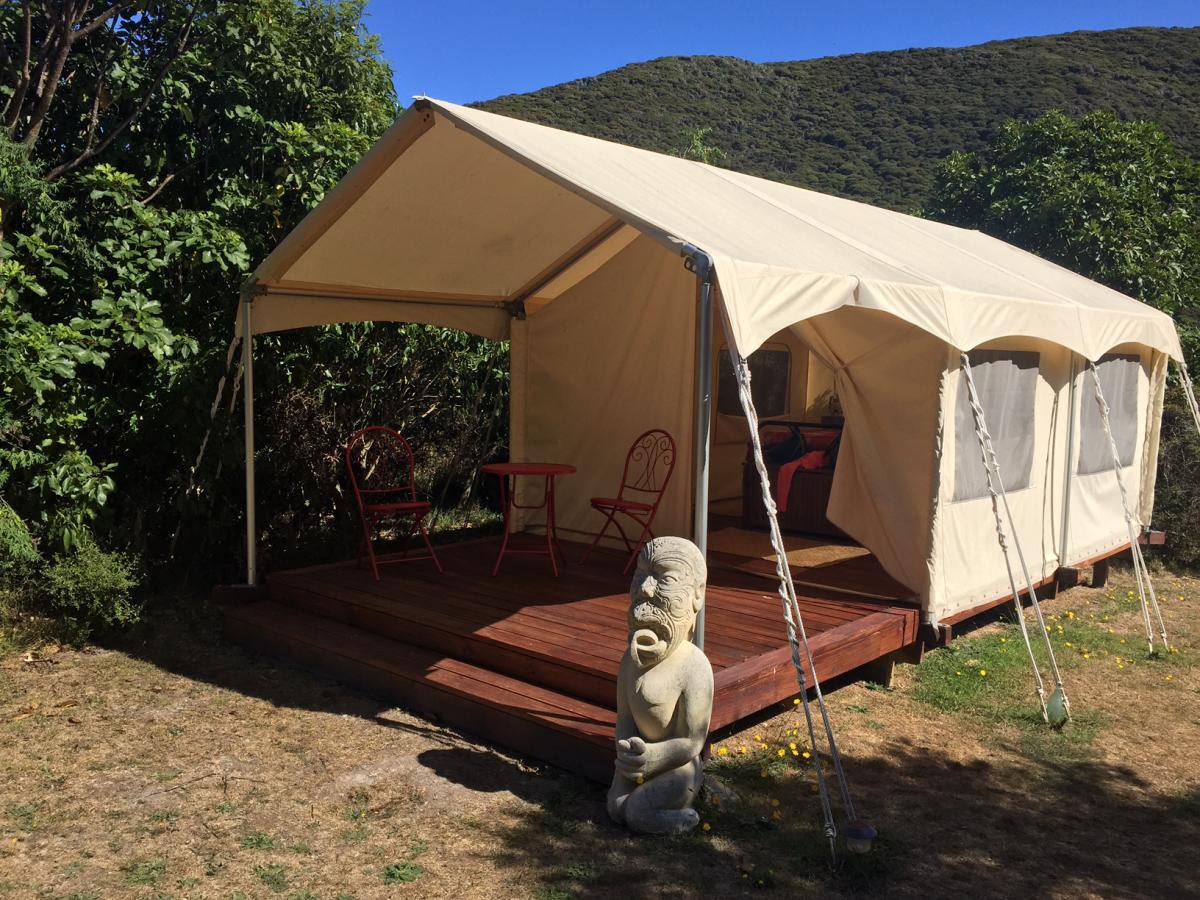
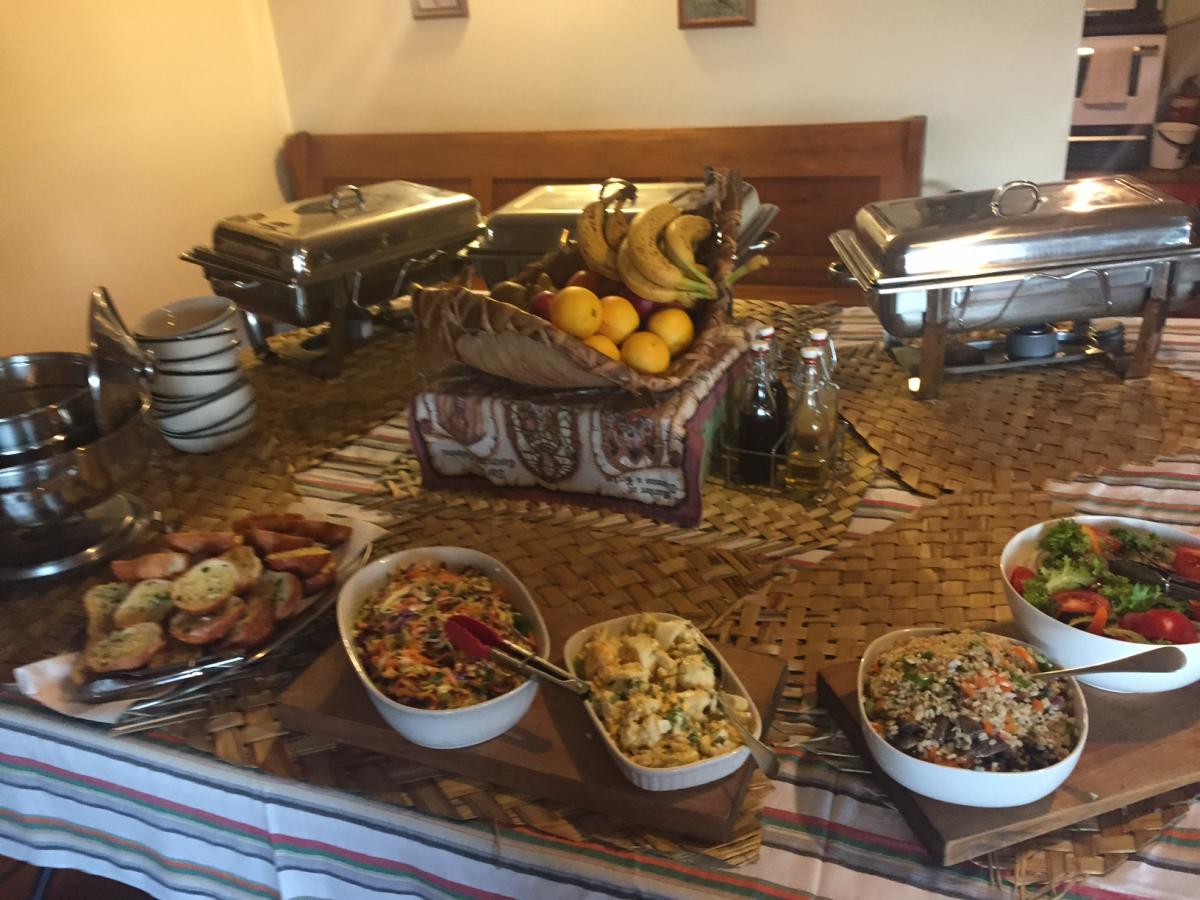
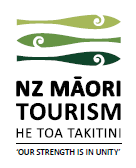
Add new comment